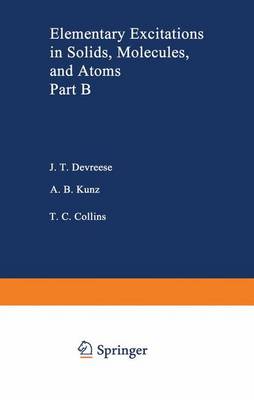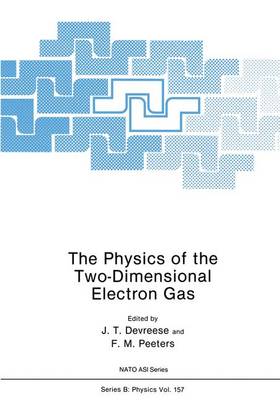NATO ASI Subseries B
3 primary works
Book 2
Elementary Excitations in Solids, Molecules, and Atom
by J. T. Devreese, A. B. Kunz, and T. C. Collins
Published 1 January 1975
The Advanced Study Institute on 'Elementary Excitations in Solids, Molecules, and Atoms' was held at the University of Antwerp (U.I.A.) from June 18th till June 30th 1973. The In- stitute was sponsored by NATO. Co-sponsors were: Agfa-Gevaert N.V. (Mortsel-Belgium), Bell Telephone Mfg. Co. (Antwerp-Belgium), I.B.M. BelgiumN.V. (Brussels-Belgium), the National Science Founda- tion (Washington D. C. - U. S .A.) and the Uni versi ty of Antwerp (U. I .A.) . A total of 120 lecturers and participants attended the Institute. Over the last few years, substantial progress has been made in the description of the elementary excitations of the elec- tronic and vibrational systems and their interactions. Parallel with this, the experimentalists have obtained outstanding re- sults, partly as a result of availability of coherent light sour- ces from the far infrared through the visible region, and partly because of the availability of synchrotron radiation sources in the soft X-ray region. The results of today will lead to fur- ther progress over the next years. It was the purpose of this NATO Advanced Study Institute to present a state of the art, namely a survey of experiment and theory.
Book 108
Polarons and Excitons in Polar Semiconductors and Ionic Crystals
by J. T. Devreese and F Peeters
Published 1 July 1984
The 1982 Antwerp Advanced Study Institute on "Physics of Polarons and Excitons in Polar Semiconductors and Ionic Crystals" took place from July 26 till August 5 at the Conference Center Priorij Corsen donk, a restored monastery, close to the city of Antwerp. It was the seventh Institute in our series which started in 1971. This Advanced Study Institute, which was held fifty years after Landau introduced the polaron concept, can be considered as the third major international symposium devoted to the physics of pola rons. The first such symposium took place in St. Andrews in 1962 under the title "Polarons and Excitons" [I]. The early theoretical developments related to polarons were reviewed in depth at this meeting; the derivation of the polaron hamiltonian by Frohlich, the Frohlich weak coupling theory (and the equivalent weak coupling canonical transformations), the Landau-Pekar and Bogolubov strong coupling theory and the Feynman polaron model formulated with his path integrals. The main emphasis was on the polaron self-energy, effective mass and mobility. From the experimental side the first evidence for polaron effects was provided by the pioneering cyclotron and mobility measurements o~ the silver halides by F. e. Brown and his group. Also the significance of polaron effects for the under standing of excitons in ionic crystals was a central topic in St. Andrews. The second Advanced Study Institute concerning polaron physics was organized at the University of Antwerp (R. U. C. A.
Book 154
The Physics of the Two-Dimensional Electron Gas
by J. T. Devreese and F.M. Peeters
Published 1 November 1987
The 1986 Advanced Study Institute on "The Physics of the two-Dimen sional Electron Gas" took place at the Conference Centre liTer Helme", close to Oostende (Belgium), from June 2 till 16, 1986. We were motivated to organize this Advanced Study Institute in view of the recent experimental and theoretical progress in the study of the two-dimensional electron gas. An additional motivation was our own theore tical interest in cyclotron resonance in two-dimensional electron systems at our institute. It is my pleasure to thank several instances and people who made this Advanced Study Institute possible. First of all, the sponsor of the Advanced Study Institute, the NATO Scientific Committee. Furthermore, the co sponsors: Agfa Gevaert, Bell Telephone Mfg. Co. N.V., Burroughs Belgium. Control Data. Digital Equipment Corporation, Esso Belgium. European Research Office (USA). Kredietbank. National Science Foundation (USA). Special thanks are due to the members of the Program Committee and the members of the Organizing Committee. I would also like to thank Mrs. H. Evans for typing assistance.


